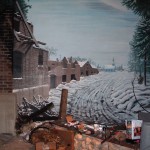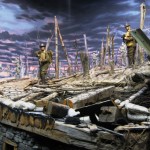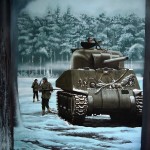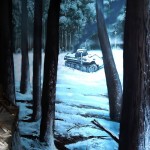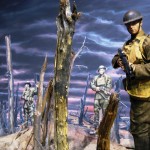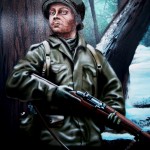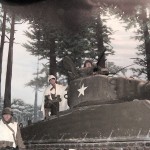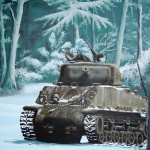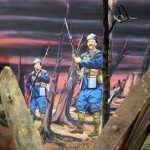The Royal War Museum in London and the National Museum of the Marine Corps are famous for their “immersive” environments in which visitors walk through a recreated historical scene rather than walking past, looking into it.
My understanding is that these sort of exhibits were pioneered by a privately owned museum, The First Division Museum at Cantigny, the estate of Robert McCormick, former owner of the Chicago Tribune who served in the Army’s First Division in WWI. He renamed his sprawling estate near Wheaton, Illinois, after the little French village where his Division first saw combat.
An example of an immersive environment would be the Battle of Cantigny exhibit in which visitors walk through a recreation of the bombed-out village and surrounding trenches, looking up at a French tank as it struggles through the barbed wire.
Further along, there is a WWII-vintage landing craft converted into a small theater. When the 15-minute film on D-Day ends, the screen lifts and visitors walk off the ramp onto a recreation of Omaha Beach littered with battle damage after the landing. They exit the beach though the maw of a heavily damaged German concrete bunker.
After a sharp turn in a hallway, they emerge into the Hürtgen Forest on the outskirts of Bastogne, France, during the Battle of the Bulge. Facing them is an oncoming Sherman tank and several figures slogging through the snow and mud.
When I discovered the Museum, all of the principal exhibitry had been done. But the Battle of the Bulge exhibit had only a black curving back wall, 24′ by 71,’ with no mural. I proposed that they let me paint one. Ten years later, after a change of administration in 2003, they called back to say, “We think that big black wall ought to have a mural.”
So with a lot of research help from the Museum and kibitzing from veterans of the Bulge, I carried the Hürtgen forest off into the snowy distance and populated it with more scruffy Shermans, one kaput Panzer and frost-breathing GIs.
After I finished the Bulge mural, they decided to take another look at their World War I/Cantigny exhibit. It had the French tank but no figures and featured a wonderfully livid sunset mural. The Museum commissioned two American Doughboy manikins to accompany the tank and asked me to paint more tanks and figures, U.S. and French, into the existing mural to match the new manikins. Since then I’ve done other, smaller murals and the working relationship continues.
